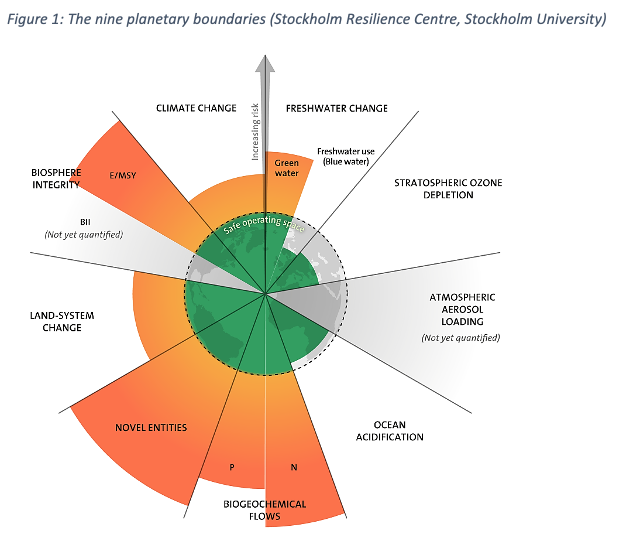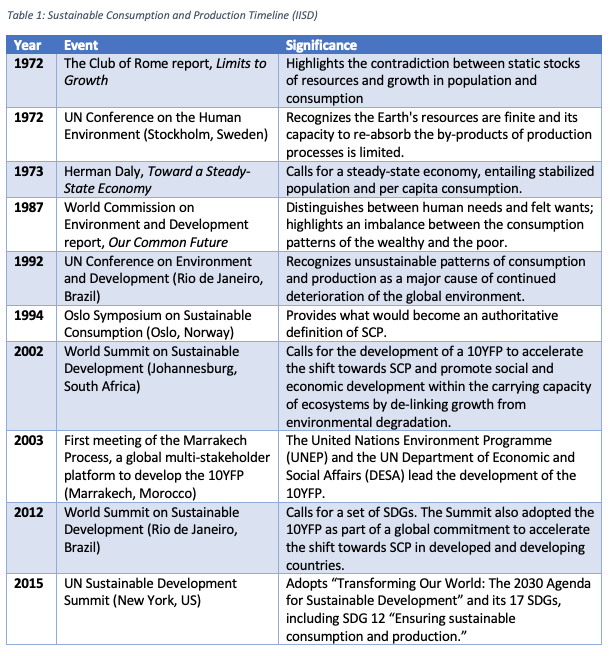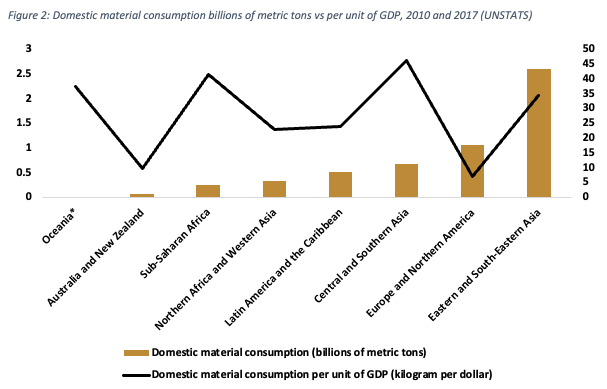“Responsible Consumption and Production” in Oceania
 Adam MacRae
Adam MacRae  May 9, 2023
May 9, 2023  Adam MacRae
Adam MacRae  May 9, 2023
May 9, 2023 We need to start re-evaluating our C&P habits to devise new ways to decouple economic growth and development from the extraction of natural resources and its impact on the natural environment. Research led at Stockholm University has shown how humanity is already exceeding its planetary ‘boundaries’, with Climate Change representing just one of nine issues of concern in Figure 1.

As a society, our reliance on natural resources has been at best unsustainable, and wasteful at worst. On the demand side, the UNEP estimates that if global population levels reach 9.6 billion people by 2050, the earth would require the equivalent of three planets worth of natural resources to sustain current levels of living standards. These projections do not even begin to factor in how much more resources would be required should billions more people improve their economic circumstances and living standards.
On the efficiency side, humanity is shambolic. When looking at the food sector, 1.3 billion tonnes of food is wasted every year; around one third of all food produced.
Something has to give.
This concern of Earth’s finite resources is nothing new, and it dates back to Thomas Malthus (1766-1834), whose now famous theory explained that given the rapid growth of human populations, there would come a time where food supplies and natural resources would be unable to keep up. In recent decades, there has been a heightened level of attention focused on the issue as highlighted in Table 1.

So where does this leave us and what’s going on in Oceania? In Figure 2, we are presented with a contradiction. Oceania (which for these purposes does not include Australia and New Zealand in the data provided by UNSTATS) has the lowest total levels of material consumption on earth, accounting for 0.11% of global demand.
This is only half the story.
When measured against GDP on a kilo/$ basis, Oceania has the third highest rate on earth; over 5x the rates of Western Europe and North America. This is due to a combination of the small size of their economies, their over-reliance on commodities and natural resources to support their economies, and high levels of imports required to support their domestic consumption needs.

Unfortunately, given local realities such as their relative geographic isolation, it will be difficult to overcome these relatively sky-high consumption patterns.
However, Oceania provides the perfect opportunity for experimentation with novel solutions that if successful, could then be scaled up across the globe.
So, what can be done in Oceania to help decouple its potential economic growth from resources extraction and consumption to limit impacting the local environment further. Below are X solutions that could lead to a dramatic reduction in C&P in Oceania.
Through a combination of the 3 tools above, Oceania can serve as an inspiration for the rest of the world in how to bring constructive change.
If you’re interested in learning more about the kind of projects we work on and how we can potentially support your initiatives, please email our Chief Sustainability Officer at info@holoceneic.com.